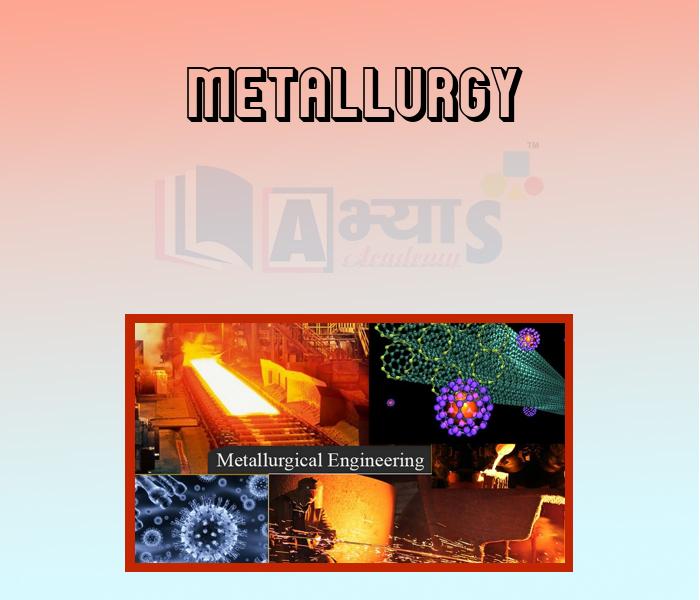Metallurgy










Metallurgy
Metals: Metals play a very vital role in our daily life. Today we know about eighty metals. Let us now study the metals in detail.
Physical Properties: All metals are solid at room temperature, except mercury, which is a liquid. Most of the metals are hard, and have high melting and boiling points. Metals are malleable i.e. they can be beaten into sheets. Gold and silver are the best malleable metals and these can be hammered into foils. Most of the metals are ductile i.e. they can be drawn into thin wires. All metals are good conductors of heat; silver is the best and lead (Pb) is the poorest conductor of heat among metals. Metals also show high electrical conductivity. The best conducts of electricity are silver, copper, gold, aluminium and tungsten.
Metallurgy: Some metals are not found in the free or native state, but are found in nature in combined states. The natural materials in which metals or their compounds occur in the earth are called minerals. Those minerals from which the metals are produced profitably are called mineral ores. Extraction of metals from their ores and refining them for use is called metallurgy.
Students / Parents Reviews [10]
My experience was very good with Abhyas academy. I am studying here from 6th class and I am satisfied by its results in my life. I improved a lot here ahead of school syllabus.

Ayan Ghosh
8thAbhyas is a complete education Institute. Here extreme care is taken by teacher with the help of regular exam. Extra classes also conducted by the institute, if the student is weak.

Om Umang
10thIt was good as the experience because as we had come here we had been improved in a such envirnment created here.Extra is taught which is beneficial for future.

Eshan Arora
8thIt was a good experience with Abhyas Academy. I even faced problems in starting but slowly and steadily overcomed. Especially reasoning classes helped me a lot.

Cheshta
10thMy experience with Abhyas is very good. I have learnt many things here like vedic maths and reasoning also. Teachers here first take our doubts and then there are assignments to verify our weak points.

Shivam Rana
7thBeing a parent, I saw my daughter improvement in her studies by seeing a good result in all day to day compititive exam TMO, NSO, IEO etc and as well as studies. I have got a fruitful result from my daughter.

Prisha Gupta
8thI have spent a wonderful time in Abhyas academy. It has made my reasoning more apt, English more stronger and Maths an interesting subject for me. It has given me a habbit of self studying

Yatharthi Sharma
10thIt has a great methodology. Students here can get analysis to their test quickly.We can learn easily through PPTs and the testing methods are good. We know that where we have to practice

Barkha Arora
10thA marvelous experience with Abhyas. I am glad to share that my ward has achieved more than enough at the Ambala ABHYAS centre. Years have passed on and more and more he has gained. May the centre flourish and develop day by day by the grace of God.

Archit Segal
7thAbout Abhyas metholodology the teachers are very nice and hardworking toward students.The Centre Head Mrs Anu Sethi is also a brilliant teacher.Abhyas has taught me how to overcome problems and has always taken my doubts and suppoeted me.
